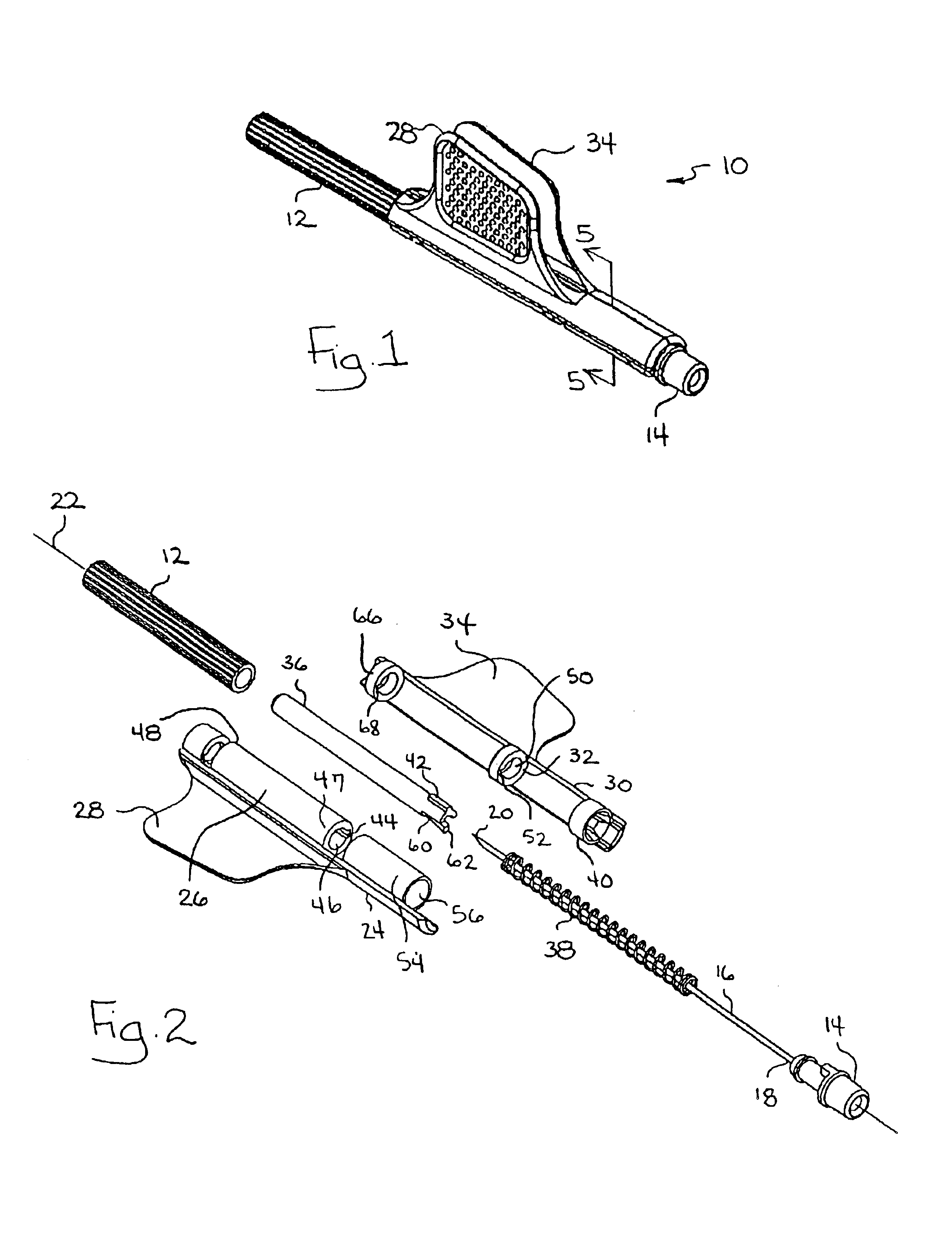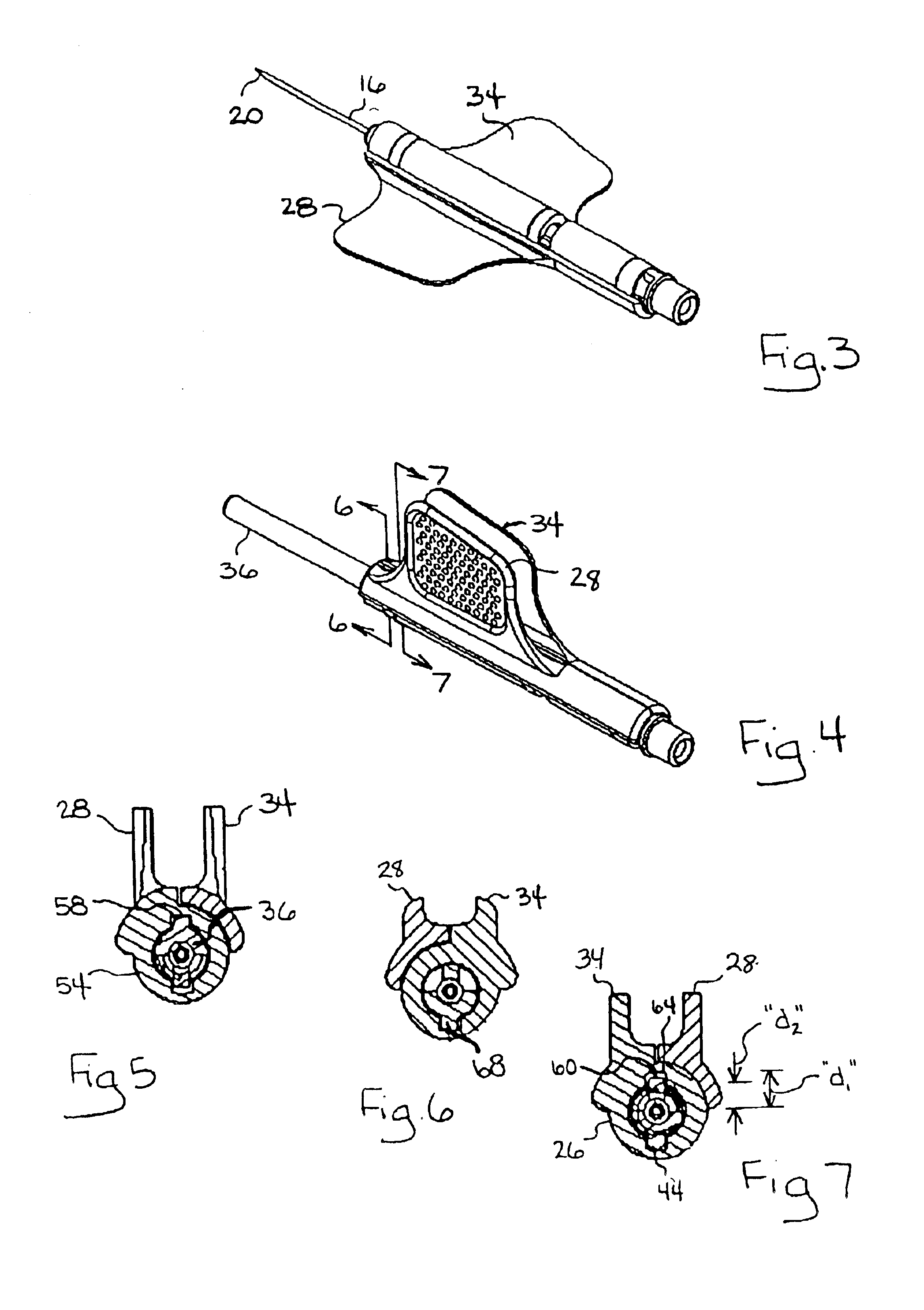Butterfly needle with passive guard
a butterfly needle and passive guard technology, applied in the direction of guide needles, needles infusion, catheters, etc., can solve the problems of unprotected needles being left unattended or improperly disposed, exposing patients and healthcare workers to life-threatening viruses, and affecting the safety of butterfly needles, etc., to achieve the effect of reducing the risk of infection
- Summary
- Abstract
- Description
- Claims
- Application Information
AI Technical Summary
Benefits of technology
Problems solved by technology
Method used
Image
Examples
Embodiment Construction
A butterfly needle device having a passive needle protection system includes an elongated needle that has a proximal end, a distal tip and defines a needle axis. The device further includes a hollow, cylindrical base member that is disposed over the needle and centered on the needle axis. A substantially flat first wing is attached to and extends radially from the cylindrical base member. The device further includes a first hollow cylinder that is disposed over the needle proximal to the base member and is centered on the needle axis. A second substantially flat wing is attached to and extends radially from the first hollow cylinder.
The above-described interactive cooperation of structure allows the second wing to rotate about the needle axis relative to the first wing. More specifically, the second wing can rotate relative to the first wing between a first, closed configuration in which the wings are juxtaposed and a second, open configuration in which the wings are displaced from ...
PUM
 Login to View More
Login to View More Abstract
Description
Claims
Application Information
 Login to View More
Login to View More - R&D
- Intellectual Property
- Life Sciences
- Materials
- Tech Scout
- Unparalleled Data Quality
- Higher Quality Content
- 60% Fewer Hallucinations
Browse by: Latest US Patents, China's latest patents, Technical Efficacy Thesaurus, Application Domain, Technology Topic, Popular Technical Reports.
© 2025 PatSnap. All rights reserved.Legal|Privacy policy|Modern Slavery Act Transparency Statement|Sitemap|About US| Contact US: help@patsnap.com



